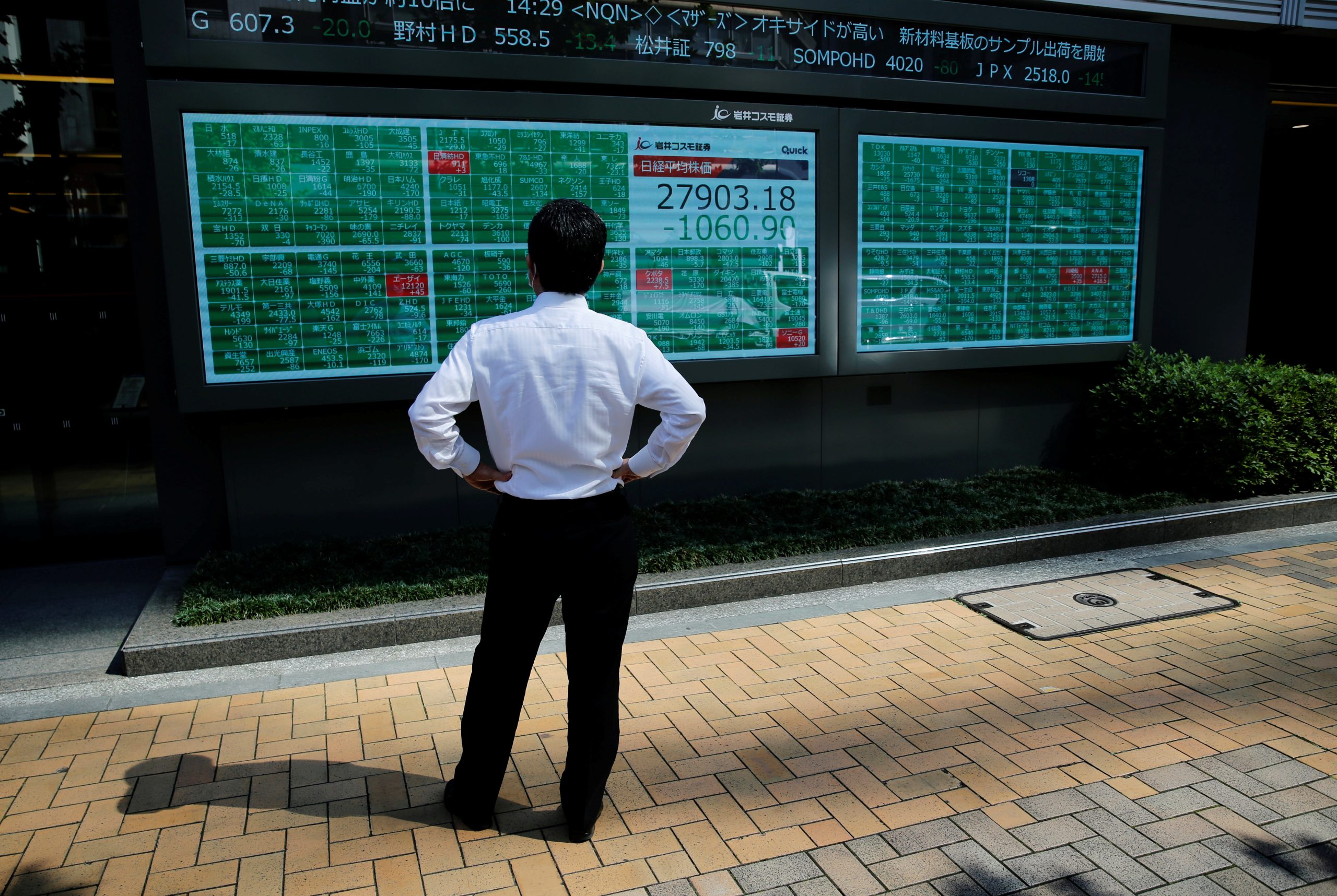
A man watches an electric board showing Nikkei index outside a brokerage at a business district in Tokyo, Japan, June 21, 2021. REUTERS/Kim Kyung-Hoon
Asian market experienced a mixed day of trading on Monday, marked by thin trading volumes due to several markets being closed for holidays. While China and South Korea’s markets remained shuttered, some significant developments and trends unfolded.
Positive Oil and U.S. Futures: Oil prices registered gains, and U.S. futures saw an upward trajectory. The cause? Congress’s approval of a temporary funding bill late Saturday, which effectively eliminated the looming threat of a U.S. federal government shutdown, ensuring that federal agencies remain open until November 17.
Japan’s Nikkei 225 Index: Japan’s Nikkei 225 index, however, faced a minor setback as a central bank survey hinted at a surge in business confidence. The Bank of Japan‘s quarterly “tankan” survey indicated a positive sentiment among major manufacturers, with a rise from plus 5 in June to plus 9. Similarly, major non-manufacturers saw a four-point increase to plus 27. This marks the sixth consecutive quarter of improvement, reaching the most positive result in roughly three decades.
In Tokyo, the Nikkei 225 index relinquished early gains, declining by 0.3% to reach 31,759.88. Australia’s S&P/ASX 200 also experienced a 0.2% drop, closing at 7,033.20. In contrast, Taiwan’s Taiex surged by 1.2%, while Bangkok’s SET index edged up by 0.1%.
Wall Street’s September Struggles: Turning to Wall Street’s recent performance, September proved challenging as the S&P 500 recorded a 0.3% decline to 4,288.05, and the Dow fell by 0.5% to 33,507.50. On the other hand, the Nasdaq composite inched up by 0.1% to 13,219.32.
Treasury Yields and the Federal Reserve: Treasury yields underwent fluctuations, initially easing but then rising once again. The 10-year Treasury yield returned to 4.58%, nearing its highest level since 2007. The increased yields suggest that investors may turn away from riskier investments like stocks when the safety of Treasurys offers higher returns. The S&P 500’s September decline of 4.9% underscores the impact of these rising yields on the stock market.
Treasury yields have been ascending as the market adapts to the Federal Reserve’s approach of maintaining high interest rates to tackle persistent inflation. The Fed, with its main interest rate at its highest since 2001, indicated its intention to reduce interest rates at a slower pace than initially anticipated.
Economic Data and Inflation Concerns: Recent economic data revealed that both inflation and U.S. consumer spending growth were slightly cooler than anticipated in August. While this may help control inflation, it could also hinder a key driver that has kept the U.S. economy from slipping into a recession: consumer spending. Additionally, the resumption of U.S. student-loan repayments may divert funds away from consumer spending.
Oil Prices on the Rise: Oil prices reached their highest levels in over a year, posing a challenge to the economy by elevating fuel costs. A barrel of U.S. crude rose 34 cents to $91.13 in electronic trading, remaining significantly higher than the $70 mark in June.
Upcoming Economic Reports: Investors will be closely watching for the U.S. jobs market update scheduled for this week, along with important reports on inflation in the following week. Any delays in these reports could complicate the Federal Reserve’s upcoming decisions on interest rates, as its next rate meeting is set to conclude on November 1.
Currency Markets: In currency trading, the dollar strengthened to 149.65 Japanese yen from 149.38 yen, while the euro weakened slightly to $1.0575 from $1.0589.
As we navigate these complex and dynamic market conditions, investors and analysts remain vigilant, seeking to decipher the intricate interplay of economic factors and global events influencing the financial landscape.
Read More: Church Roof Collapses During Baptism Killing 10 In Mexico








